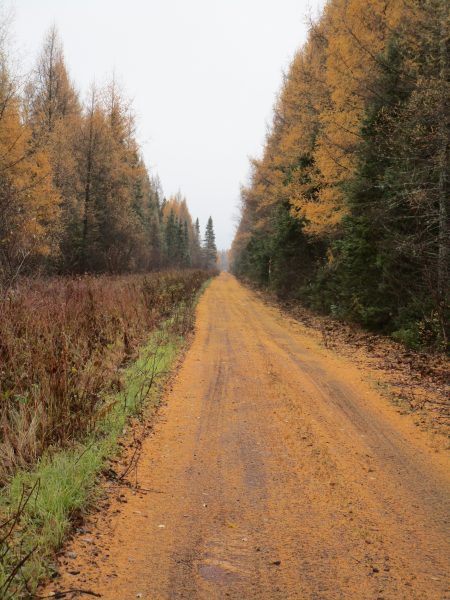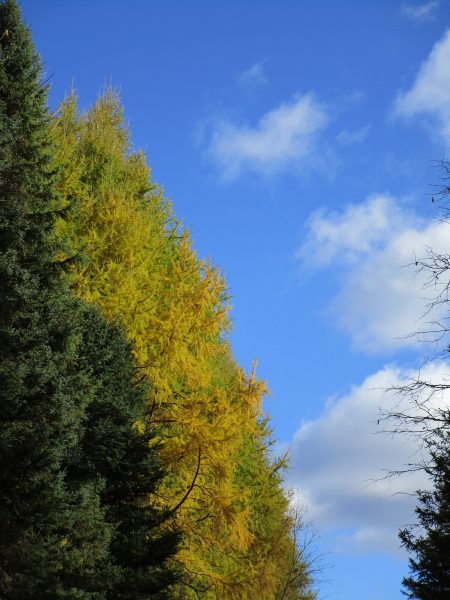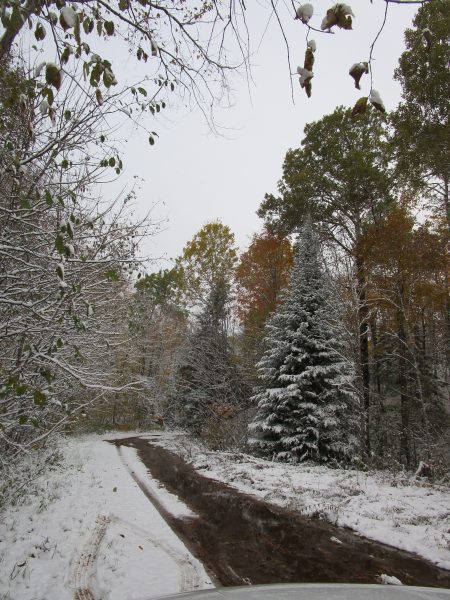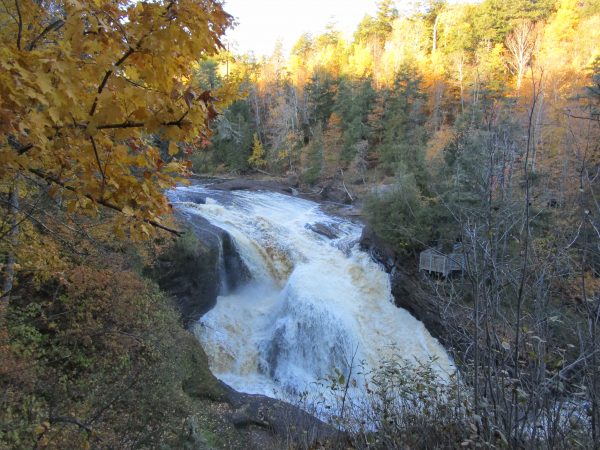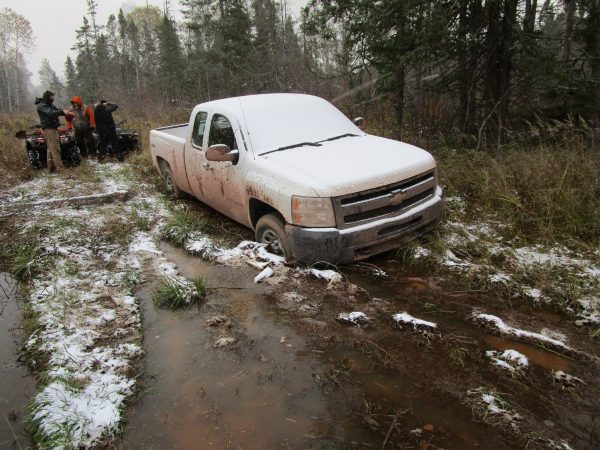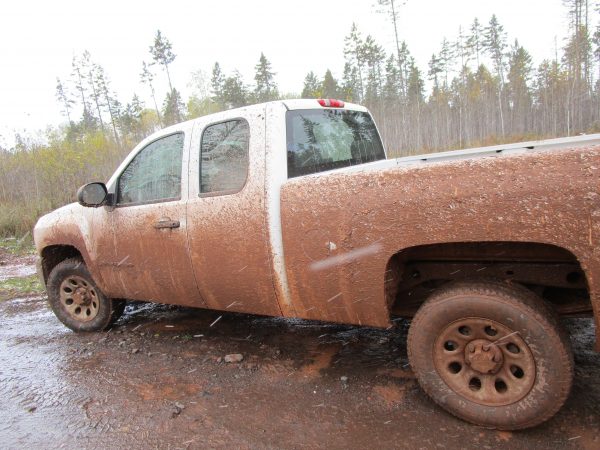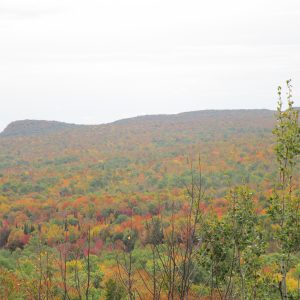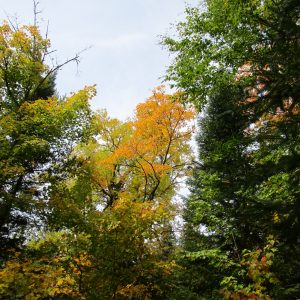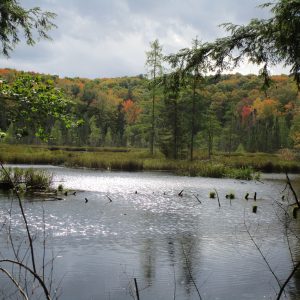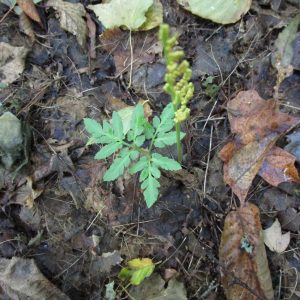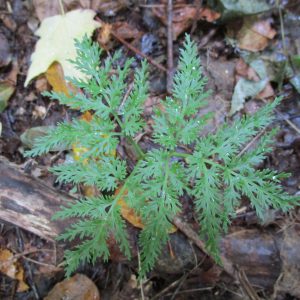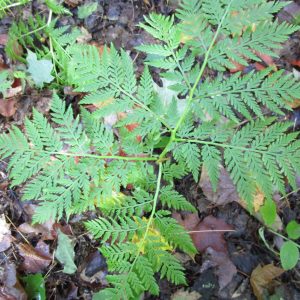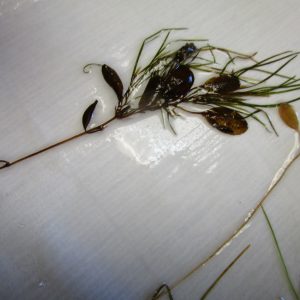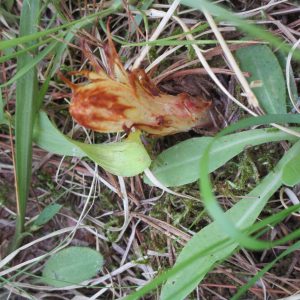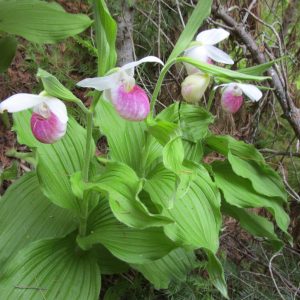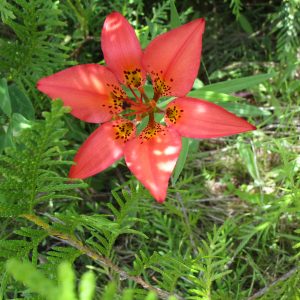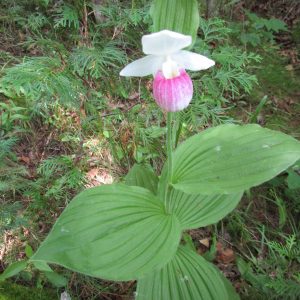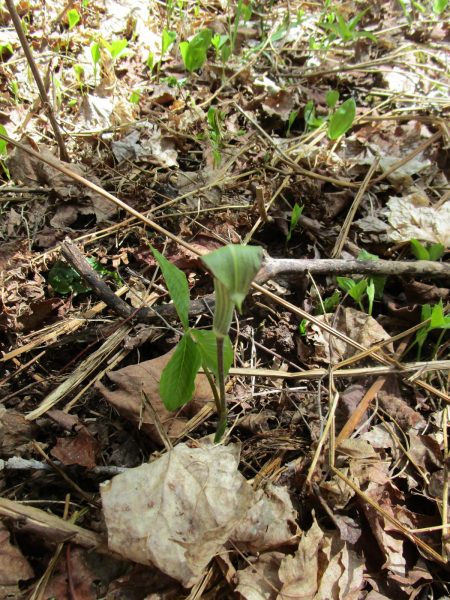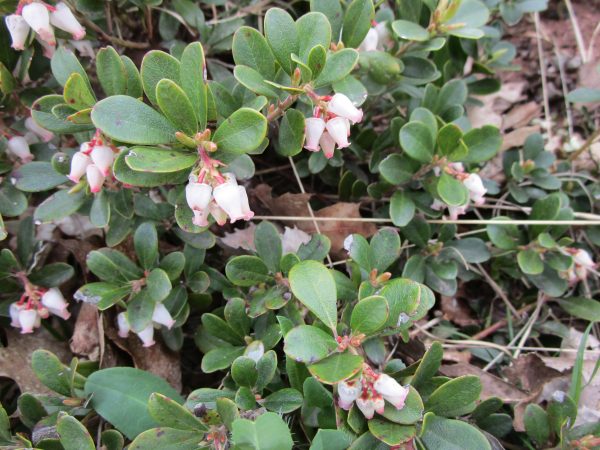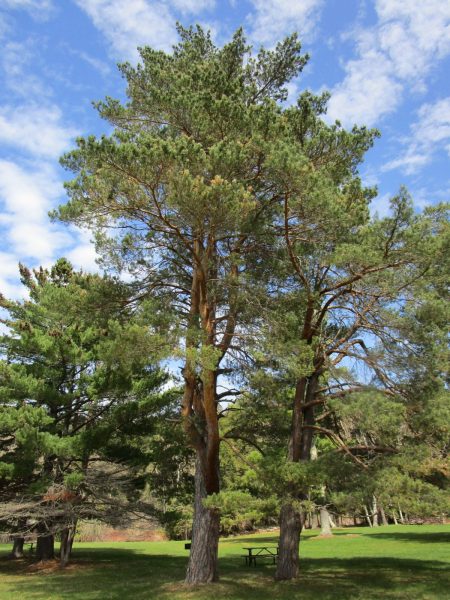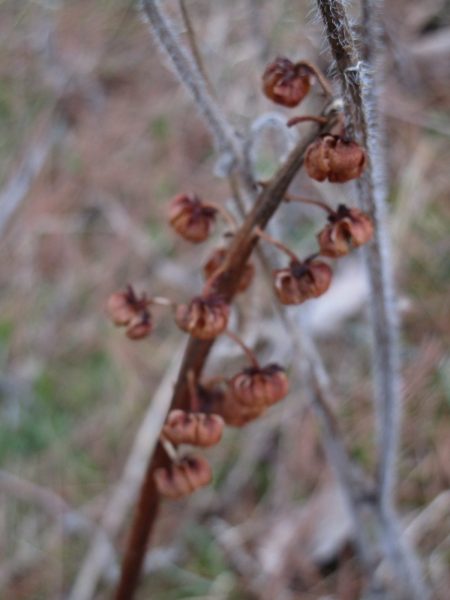Autumn is a wonderful time of year. Leaves change color and occasionally there are four inches of snow on the ground. My favorite time in the forest is when the upper leaves have fallen allowing for light to reach the under story plants and illuminate their leaves.
I have been helping the summer seasonal crews finish up their work projects. Went out with the invasive species crew for a couple days, mainly focused on cut stump herbicide for glossy buck thorn and honeysuckle. A couple kids got their truck stuck in a deep hole, went back with them the next day to get it out. Rode in a couple mile on four-wheeler, cut up some logs and used a hi-lift to put them under the four tires, then used a come-along to pull the truck while I drove it out. Made it safely back onto solid ground.
- Truck tuck
- Truck not stuck
I had the opportunity to do some stream work which had been delayed by heavy rains. Went sampling for invertebrates and taking measurements of the banks. When we arrived at one of the sites, the truck said it was 22 degrees outside, water temp was right around freezing. Couldn’t wait for the sun to reach us. No pictures, too cold and wet.
Also helped out at the nursery, moving flats of trees from greenhouses outside for the winter. The snow provides good insulation for the roots. Also some planting and moving irrigation pipe.

